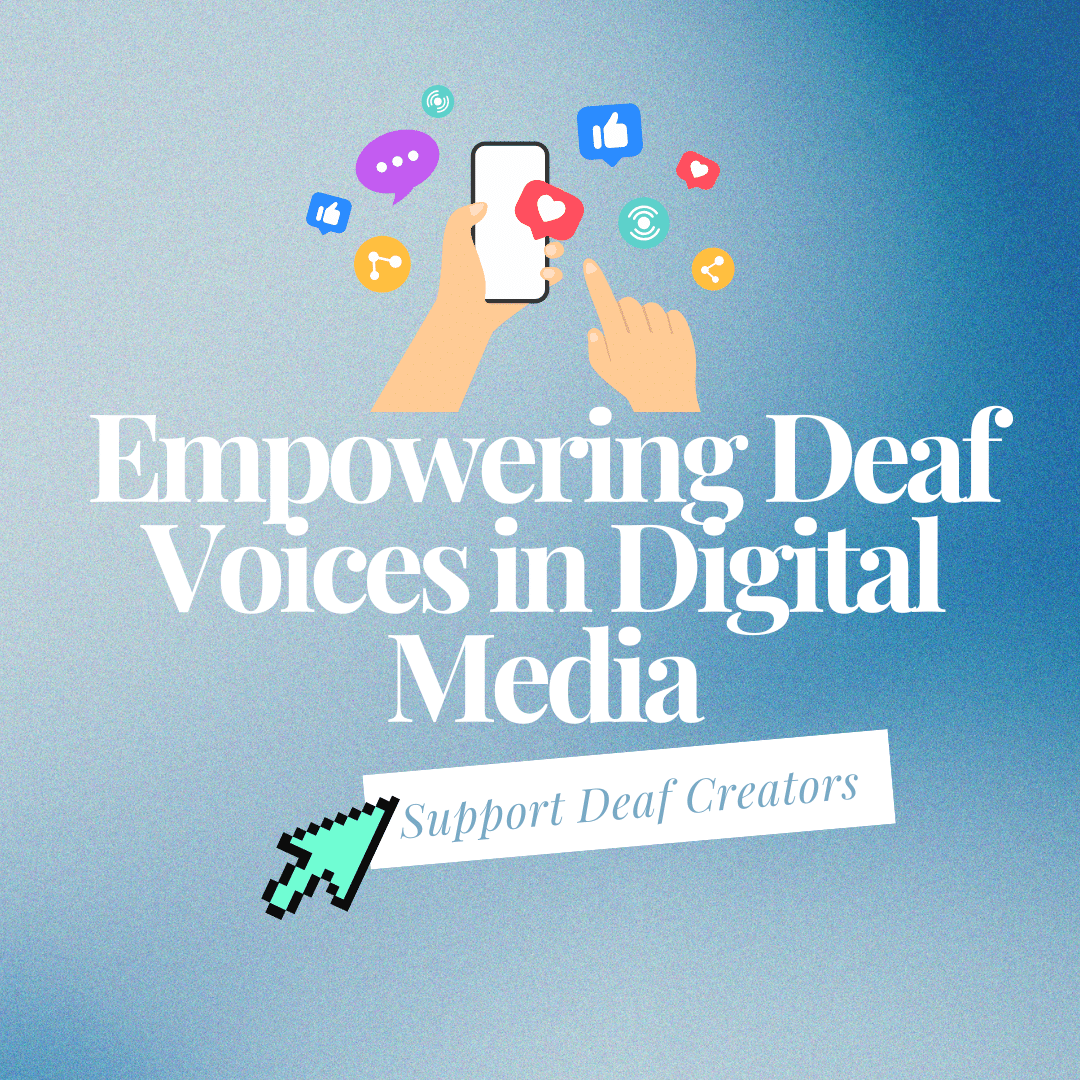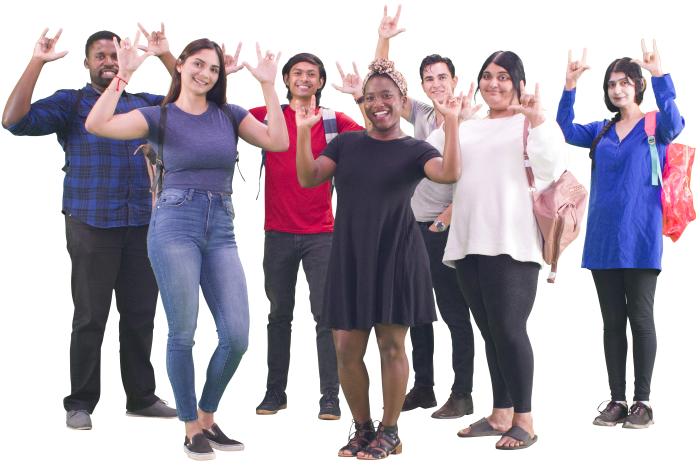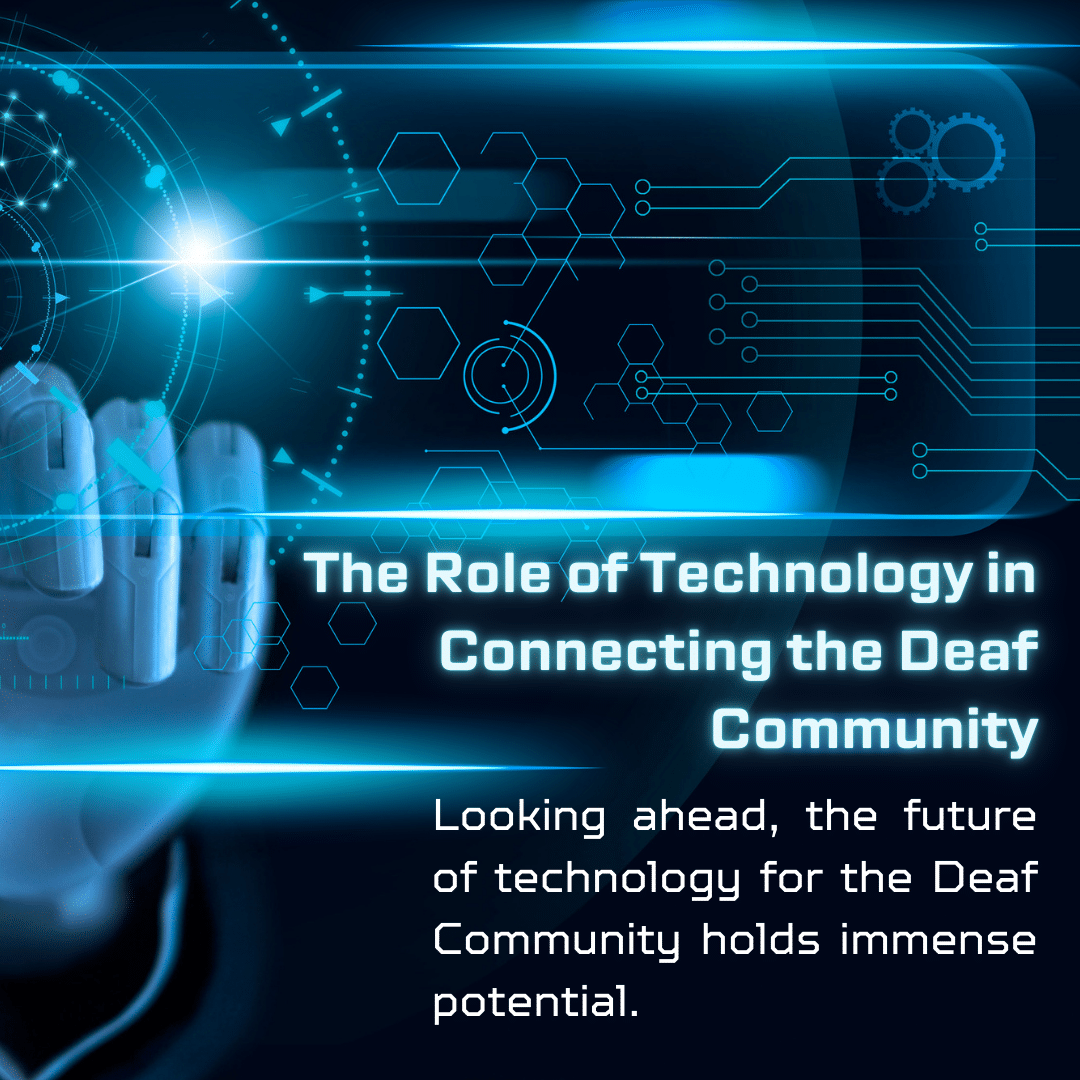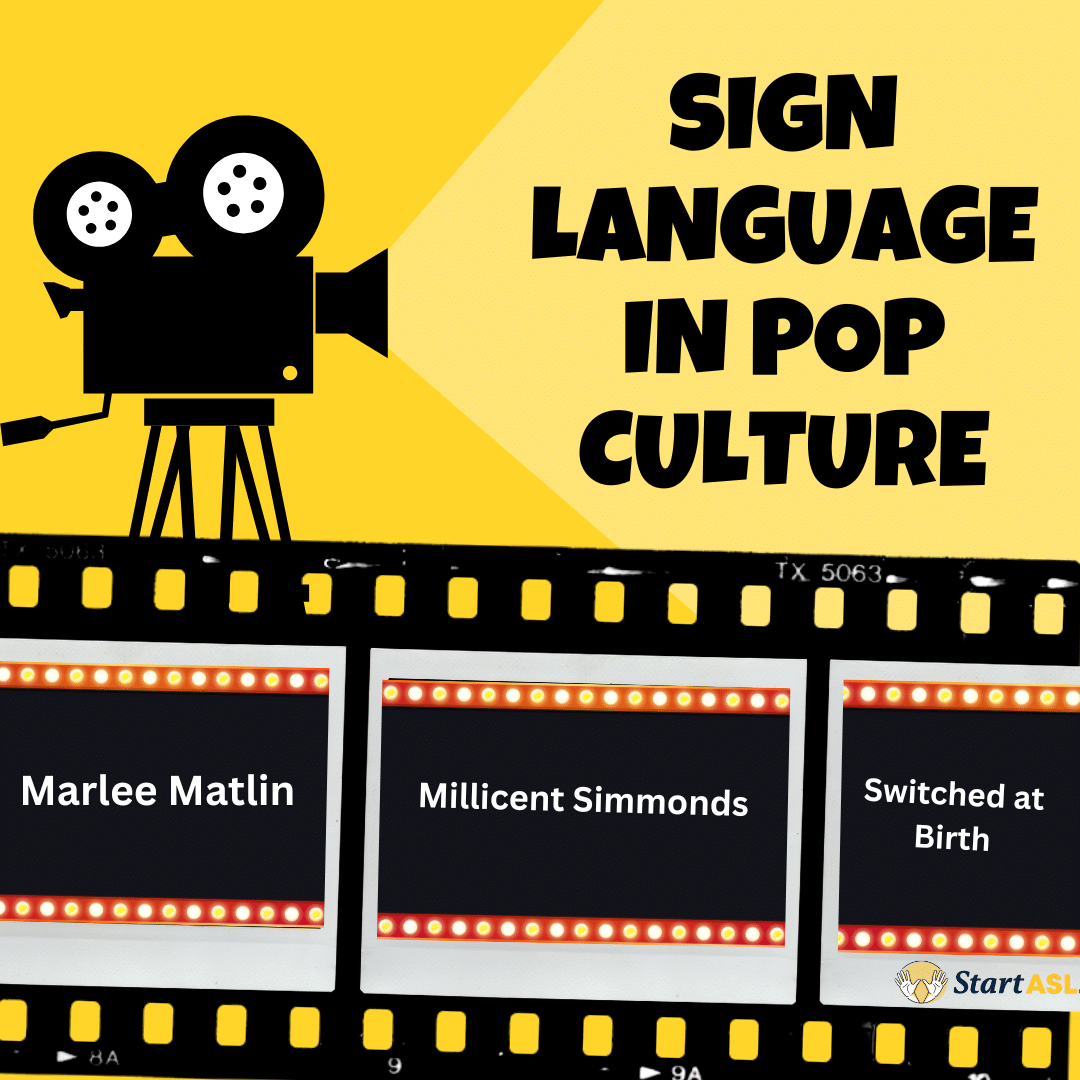
The Role of Technology in Connecting the Deaf Community
- by Dennis Valansi
- No Comments
The Role of Technology in Connecting the Deaf Community
In today’s rapidly evolving world, technology plays a crucial role in bridging communication gaps for many, especially the Deaf community. As society becomes increasingly digital, the development of innovative tools and platforms is reshaping the way individuals with hearing impairments engage with their surroundings. From innovative assistive devices to versatile communication apps, technology has paved the way for more inclusive interactions. In this article, we will explore various technological advancements that have significantly impacted the deaf community and improved accessibility, fostering a more connected and inclusive environment for all.
Assistive Devices: Enhancing Communication
Assistive devices are specifically designed to support individuals with hearing impairments, enabling them to interact more effectively with their environment. These devices have evolved significantly over the years, incorporating cutting-edge technologies to provide enhanced auditory experiences and facilitate communication. Let’s delve into some of the most influential devices available today and examine how they have transformed the lives of those who rely on them.
Hearing Aids: Amplifying Sound
Hearing aids have are an assistive device that work for some, but not everyone in the Deaf community. These small electronic devices amplify sound, making it easier for individuals to hear and communicate. Modern hearing aids come equipped with advanced features such as noise reduction, Bluetooth connectivity, and customizable settings that cater to individual needs. The evolution of hearing aids has been marked by a shift towards more discreet and powerful devices, allowing users to enjoy a fuller, richer audio experience. With wireless connectivity, users can now stream audio directly from their smartphones, televisions, and other devices, making everyday interactions more seamless and enjoyable.
Moreover, the integration of artificial intelligence (AI) in hearing aids has opened new doors for personalized sound experiences. AI-driven hearing aids can adapt to different environments, automatically adjusting settings to optimize sound quality. This means that whether you’re in a crowded restaurant or a quiet library, your hearing aids can provide the best possible auditory input, enhancing your ability to participate in conversations and activities. As technology continues to advance, we can expect hearing aids to become even more sophisticated, offering enhanced features and greater accessibility for users.
Cochlear Implants: Restoring Hearing
For those with profound hearing loss, cochlear implants offer a solution. Unlike hearing aids, which amplify sound, cochlear implants bypass damaged parts of the ear and directly stimulate the auditory nerve. This allows individuals to perceive sound and enhance their ability to understand speech. Cochlear implants have been transformative for many, enabling them to engage more fully with the world around them and participate in conversations they might otherwise miss.
The process of receiving a cochlear implant involves both surgical and rehabilitative components, but the results can be life-changing. Advances in cochlear implant technology have led to improved sound quality, more natural hearing experiences, and better outcomes for recipients. Additionally, ongoing research in this field is exploring ways to make cochlear implants even more effective, with innovations aimed at enhancing the clarity of sound and expanding the range of frequencies that users can perceive. As these developments continue, cochlear implants will likely become an even more vital tool for those seeking to regain their hearing.
Communication Apps: Bridging the Gap
Communication apps have revolutionized how the deaf community interacts with the world. These apps offer various functionalities that cater to the diverse needs of individuals with hearing impairments. By providing alternative modes of communication, these technologies enable users to engage with others more effectively, breaking down barriers that once hindered interaction.
Real-Time Text (RTT) Apps
RTT apps enable users to send and receive text messages in real-time, providing a seamless conversation experience. This technology is especially beneficial in situations where verbal communication is challenging, such as during phone calls or in noisy environments. RTT apps have become indispensable tools for many, offering a reliable means of communication that is quick, efficient, and accessible.
In addition to facilitating everyday conversations, RTT apps are invaluable in emergency situations, where the ability to communicate swiftly and accurately can be critical. These apps are increasingly being integrated into smartphones and other devices, ensuring that users have access to real-time text communication whenever they need it. As the technology behind RTT apps continues to advance, we can expect to see further improvements in speed, reliability, and ease of use, making them an even more essential part of the communication toolkit for the deaf community.
Video Relay Services (VRS)
VRS allows individuals to communicate using sign language through video calls. A sign language interpreter facilitates the conversation between the deaf user and the hearing individual, ensuring smooth and effective communication. This service has been instrumental in allowing deaf individuals to engage in more natural and fluid conversations, akin to face-to-face interactions.
The widespread availability of high-speed internet and the proliferation of video-enabled devices have made VRS more accessible than ever. As a result, deaf individuals can now connect with friends, family, and colleagues with ease, regardless of distance. Furthermore, ongoing advancements in video quality and connectivity are enhancing the VRS experience, making it even more seamless and user-friendly. As VRS continues to evolve, it will undoubtedly play an increasingly important role in bridging communication gaps and fostering greater inclusion for the deaf community.
Speech-to-Text Apps
Speech-to-text apps convert spoken words into written text, allowing deaf individuals to understand spoken conversations effortlessly. These apps are particularly useful in educational settings, meetings, or any scenario where real-time transcription is needed. With the aid of speech-to-text technology, users can follow along with spoken content, participate in discussions, and access information that might otherwise be inaccessible.
The accuracy and speed of speech-to-text apps have improved significantly in recent years, thanks in part to advances in machine learning and natural language processing. These improvements have made the technology more reliable and user-friendly, allowing it to cater to a wider range of users and applications. As developers continue to refine these tools, we can expect even greater precision and versatility in speech-to-text apps, further empowering deaf individuals to engage with the world around them.
Closed Captioning
Closed captioning provides on-screen text for spoken dialogue, making it easier for deaf individuals to follow along with video content. This feature is widely used in television broadcasts, online streaming platforms, and educational videos. By providing a written transcription of spoken words, closed captioning allows users to access and enjoy content that might otherwise be inaccessible.
The availability and quality of closed captioning have improved dramatically in recent years, with many platforms now offering accurate and timely captions for a wide range of content. As more creators and broadcasters prioritize accessibility, closed captioning is becoming a standard feature in video production, ensuring that all audiences can enjoy and benefit from visual media. Additionally, advances in automated captioning technology are making it easier and more cost-effective to provide captions, further expanding access to video content for the deaf community.
Smart Home Devices
Smart home devices, such as smart speakers and home automation systems, can be integrated with assistive technology to enhance accessibility. For instance, smart doorbells with video capabilities allow deaf individuals to see visitors at their door, while smart lights can flash to alert them of important notifications. These innovations provide users with greater control over their environment, promoting independence and security.
The integration of smart home technology with assistive devices is opening up new possibilities for accessibility and convenience. As these technologies become more advanced and affordable, they are likely to become increasingly common in homes, providing deaf individuals with more tools to manage their daily lives. From controlling home appliances to receiving alerts for various events, smart home devices are transforming the way deaf individuals interact with their surroundings, enhancing their quality of life.
The Impact of Technology on the Deaf Community
The advancements in technology have had a profound impact on the deaf community, promoting independence, enhancing communication, and fostering social inclusion. By providing tools that facilitate engagement with the world, technology has opened up new opportunities for deaf individuals to participate in all aspects of life.
Enhancing Social Inclusion
Technology has played a pivotal role in breaking down barriers and promoting social inclusion for the deaf community. By enabling effective communication, these innovations foster connections and understanding between deaf and hearing individuals. Social inclusion is essential for building strong, diverse communities, and technology is a powerful tool for achieving this goal.
The ability to communicate effectively with others opens up new opportunities for social engagement, from participating in community events to forming meaningful relationships. Technology has made it easier for deaf individuals to connect with others, share experiences, and contribute to their communities. As society becomes more aware of the importance of inclusion, the role of technology in facilitating social connections will only continue to grow.
Challenges and Future Directions
While technology has significantly improved accessibility for the Deaf community, challenges remain. The cost of assistive devices and communication apps can be prohibitive for some individuals. Additionally, there is a need for ongoing research and development to enhance the accuracy and reliability of sign language recognition technology. These challenges highlight the importance of continued investment in accessible technology.
Looking ahead, the future of technology for the Deaf community holds immense potential. Continued innovation and collaboration between technologists, researchers, and the deaf community will pave the way for even more inclusive and accessible solutions. By working together, stakeholders can identify and address the unique needs of the deaf community, ensuring that technological advancements benefit everyone. The future promises exciting possibilities for enhancing communication, accessibility, and inclusion for deaf individuals worldwide.
Examples of Devices for the Deaf
Smart Home Devices
For those with smart home setups, smart devices such as smart bulbs (e.g., Phillips Hue) or smart speakers can be programmed to flash or emit a bright light at a certain time. Some people also use vibrating smartwatches or wearable devices connected to these systems.
Vibrating Fire Alarm Systems
- These systems include a bed shaker or vibrating pad that can be placed under a pillow, mattress, or another surface. When the fire alarm goes off, it triggers the vibrating device to alert the person. This is an especially useful feature for waking someone up during the night.
- Example: Some smoke detectors are specifically designed to work with external vibrating alarms or bed shakers (e.g., Sonic Boom or FireAlert systems).
Visual or Flashing Light Alarms
- Fire alarms designed for Deaf individuals often incorporate bright, flashing strobe lights that can catch the person’s attention, even if they can’t hear the alarm sound. These strobe lights are typically much brighter and more intense than regular household lighting, making them visible even in bright environments.
- These visual fire alarm systems are often combined with standard alarms to make sure they can be used by everyone in the household.
- Example: Strobe Light Smoke Detectors, which flash bright, intense lights when a fire is detected.
Wearable Alerts (Wristbands and Devices)
- There are wearable devices, such as vibrating wristbands, that are connected to fire alarm systems. When the smoke alarm is activated, the wristband vibrates to alert the wearer, ensuring that they know there’s an emergency.
- Example: A vibrating fire alarm notification wristband or smartwatch that connects to the home’s fire safety system and vibrates when the alarm sounds.
Visual Alert Systems for the Entire Household
- Some systems offer both a sound alarm and a visual component (e.g., a flashing light) to ensure everyone in the household is alerted. In this case, the visual component is designed to be particularly bright and noticeable, to ensure those who are Deaf can still react in time.
Vibrating Doorbell Systems
- A vibrating doorbell system can be installed to notify a Deaf person when someone is at the door. These systems include a vibrating pad or wearable device that shakes to alert the user when the doorbell rings.
- Example: A doorbell system with a vibrating pad placed under the pillow or on a chair. When the doorbell rings, the pad vibrates to catch the person’s attention.
Flashing Light Doorbells
- Some doorbells are equipped with flashing lights, often very bright and visible, to catch the person’s attention. The light will flash rapidly when someone rings the doorbell, providing a visual alert.
- Example: A doorbell system that integrates with strobe lights or a series of bright LED lights that flash when the doorbell is pressed.
- specially if the parent is in a different room or needs to be alerted while performing other tasks.
- Example: Baby monitors that use flashing lights in combination with the sound detection to signal a cry, with adjustable brightness.
Smartphone Baby Monitor Apps
- Smartphone apps can be used to turn any phone into a baby monitor. These apps can send notifications, text alerts, or even push visual cues when the baby is crying. Some apps also work with smart home devices to trigger flashing lights or other signals to alert the parent.
- Example: Apps like Baby Monitor 3G or Cloud Baby Monitor, which send notifications or display a video feed, ensuring the parent is aware of their baby’s cries.
By using these devices, Deaf parents can stay informed about their baby’s cries and respond in a timely manner, ensuring that they can care for their baby effectively and comfortably.
Technology continues to play a vital role in connecting the deaf community with the world. From assistive devices and communication apps to accessibility tools and inclusive technology, these innovations have transformed the way individuals with hearing impairments interact and communicate. As we embrace these advancements, it is crucial to ensure that technology remains accessible and affordable for all, fostering a more inclusive and connected society. By prioritizing accessibility and inclusion in technological development, we can create a world where everyone has the opportunity to thrive, regardless of their hearing ability.
Learn more ASL with us! Check out all of our options for learning from us https://www.startasl.com/learn-american-sign-language/










